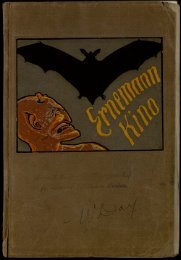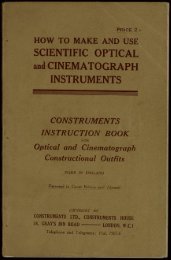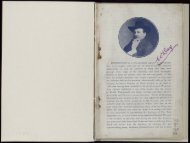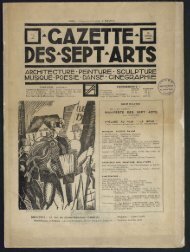Untitled
Untitled
Untitled
Create successful ePaper yourself
Turn your PDF publications into a flip-book with our unique Google optimized e-Paper software.
28 MODERN MAGIC LANTERNS. COMPRESSED GASES. 29<br />
pressure gauge is shown at Fig. 21, and is usually graduated<br />
with two scales, one reading from 0 to 110, or thereabouts,<br />
Fig. 21. PRESSURE GAUGE.<br />
and the other from 0 to 10, the 120 of the one scale corresponding<br />
with the 10 of the other. The smaller divisions<br />
are atmospheres (an atmosphere is taken as a pressure<br />
of 15 lb. to the square inch) and at a pressure of 120 atmospheres<br />
a " 10-foot " bottle contains 10 feet of gas, which is<br />
read off direct on the other scale. If the cylinder is a 20foot<br />
or 40-foot, the number of cubic feet indicated on the<br />
gauge must be multiplied by 2 or 4 respectively ; if a<br />
12-foot, by 11, and so on, multiplying in each case by the<br />
number of times 10 feet are contained in the nominal<br />
capacity of the charged cylinder. In this way the contents<br />
of the cylinder can be gauged. Those who do not care to<br />
incur the expense of a gauge can ascertain roughly how<br />
much gas the cylinder contains by weighing it. Inasmuch<br />
as 12 cubic feet of oxygen gas weigh about a pound<br />
avoirdupois, if the weight of the cylinder empty is known,<br />
the difference in ounces between that weight and its weight<br />
when it contains an unknown amount of oxygen must be<br />
multiplied by 3 and divided by 4, the result being the<br />
number of cubic feet of oxygen it contains.<br />
For example : A cylinder which when empty weighs<br />
25 lb. 14 oz. is found to contain a certain amount of oxygen<br />
making it weigh 27 lb. 81 oz. It is required to know<br />
how much of the gas it contains. On subtracting 25 lb.<br />
14 oz. from 271b. 8 ozs., we get 251 oz. Multiplying<br />
251 by 3 and dividing by 4, the result is 194the number<br />
of cubic feet of gas the cylinder contains. This may be<br />
taken as a rough guide, but too much dependence should<br />
not be placed on information got by means of an operation<br />
where a very slight mistake may greatly mislead. In the<br />
case of coal gas, no useful indication of the amount of the<br />
contents of a cylinder can be got by weighing.<br />
Gauges, like regulators, must not be used indiscriminately<br />
for oxygen and hydrogen, and on turning the gas<br />
into them it must be done gently and by degrees, on no<br />
account with anything like a jerk. With this end in view,<br />
indeed, the general custom now is almost to close the<br />
entrance to the gauge, only leaving the minutest hole<br />
through which the gas can but gradually force its way, no<br />
matter how suddenly it may have been turned on.<br />
With a view to prevent the filling of a bottle which might<br />
contain some hydrogen with oxygen, or vice vein& and the

















